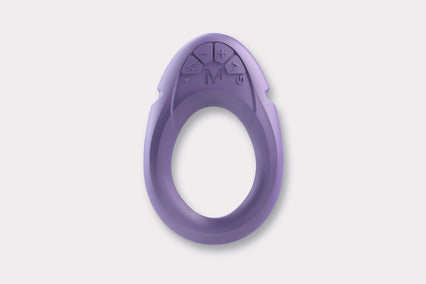Prostate cancer is one of the most common cancers among men, yet conversations around it are often delayed until symptoms become serious. According to Prostate Cancer UK, about 1 in 8 men will be diagnosed during their lifetime, and many cases go undetected until the later stages. That’s why raising awareness and encouraging early checks is vital.
To make sure this isn’t just another vague list, we interviewed Dr. Mafe Peraza Godoy, a leading urologist and sexual medicine expert, for the most up-to-date, fact-based insight into what men really need to know.
Signs of Prostate Cancer
We asked Dr. Mafe: What are the signs of prostate cancer in men that we should be looking out for, either in yourself or your partner?
“When it comes to spotting signs of prostate cancer, there are actually no specific symptoms and any problems can be confused with benign prostatic growth symptoms which include:
- Poor stream or straining when urinating
- Urinary incontinence, frequent urination
- Urinary retention, difficulty urinating
- Overflow incontinence
- Increased frequency of urination during day or/and night, urgency, which medical doctors known as LUTS (lower urinary obstructive symptoms).
However, if you do notice any of these symptoms, make sure to get those checked out by your doctor or urologist. If you notice them in a partner, then open up a conversation of how important their health and wellbeing is.
For testicular cancer, this can be a finding after consulting for pain or infection of the testicle. these would be the main symptoms to consult. However, it is not necessarily considered cancer as the first option.”
How to check for signs of prostate cancer
Dr. Mafe, how can you actually check for signs of prostate cancer?
“It is good to know that there is a lot of debate about the screening for prostate cancer and it is performed mainly by family doctor or urologist, it will of course depend on where the man resides.
Early screening of prostate cancer has long been a controversial topic for urologists and oncologists alike.
On the one hand it can detect cancer while it can still be treated, but on the other hand, it also risks over-treatment and a subsequent decline in patients’ quality of life.
However, Movember calls to prevention by promoting regular check-ups, especially after the age of 50. If a relative (grandfather, father, uncle or brother) has had prostate cancer, it is advised to get checked at 40 years old.
Regarding testicular cancer, it is actually found more commonly in younger men, so self-examination is the most important “self-action.” If you notice any change in consistency, color, size and/or pain, do go to the doctor as soon as possible.
Prostate Cancer UK explains there are two ways to test for prostate cancer.
- A PSA test – a blood test for levels of a prostate-specific antigen – can suggest you have a problem with your prostate, though not necessarily cancer.
- A DRE (digital rectal examination) where the doctor or nurse will feel the prostate through the rectum.”
The importance of early detection
Dr. Mafe, can deaths from prostate cancer be reduced with early diagnosis?
“In the past, most men with localized prostate cancer were not identified and the window of curability closed before treatment could be given. Most of these patients were diagnosed with advanced disease which was curable.
According to the James Buchanan Brady Urological Institute, today 70% of men who are identified through sequential PSA screening are found to have localized prostate cancer. With more funding and improvements in the use of PSA testing early noninvasive diagnosis are increasingly possible and open up that window of curability.”
The real benefits of prostate massage
Dr. Mafe, is there any evidence that prostate massage can help reduce risk of prostate cancer?
“Back in 2004, Harvard Medical school found that ejaculation frequency was associated with reducing risk of cancer by 22%. However, there is no further scientific evidence on this. Inconsistent publications mention that prostate massage can reduce risk, but to date, it cannot be indicated that it is definitive. There is no medical indication for it or relation with lower the risk for any cancer.
It is vital that the correct information is disseminated, especially when it comes to prostate health. Aside from prostate cancer, massaging or vibrating the perineum and the prostate can in fact alleviate painful symptoms of other prostate problems including prostatitis and an enlarged prostate.”
Vibration therapy, or prostate massage with vibrations, has been clinically studied to help ease prostatitis-related discomfort. The FDA-registered prostate device Molto does exactly that. In fact, men from a study reported feeling less prostate-related discomfort after regular use of Molto. Designed with urologists to replicate prostate massage, this device’s targeted vibrations can help support everyday prostate comfort and wellbeing.
More about Movember
Dr. Mafe, could you please tell us about Movember and why talking about men’s health is so important?
“Movember is installed progressively to raise awareness about male health specifically about prostate and testicular cancer.
Although very little is said about this and may be better known about gender inequality with women’s disadvantage in many aspects, it is important to take into account that traditionally, the health of men has been limited to manage the crisis, that is, when they are ill or feel really bad to ask for help.
Men tend to ignore prevention or “basic maintenance” until a medical problem forces them to look for help.
Society exerts these expectations and mentality from men. Many men assume the most difficult and life-threatening tasks without question. They are taught to hide or even ignore their concerns.
Understandably men are reluctant to talk about these concerns. Society has conditioned them to remain silent in the face of anything that makes them feel uncomfortable. At this time, they do not totally understand that opening up will benefit them.
Movember is a movement that allows men to be vulnerable and aware about diseases specifically related to them for at least a month, and hopefully much longer!
Movember allows the possibility for men to at least recognize that asking questions about their health and care will save their lives.”
Takeaway
Prostate cancer is a serious condition that demands awareness, knowing the signs, getting tested regularly, and talking openly about it can save lives. But prostate health goes beyond cancer prevention, into everyday comfort and quality of life. Don’t let information die in silence - start the conversation, take action, and if you want a proactive way to protect your prostate today, the urologist-designed device Molto offers a clinically tested way to support comfort and wellbeing from home.















































